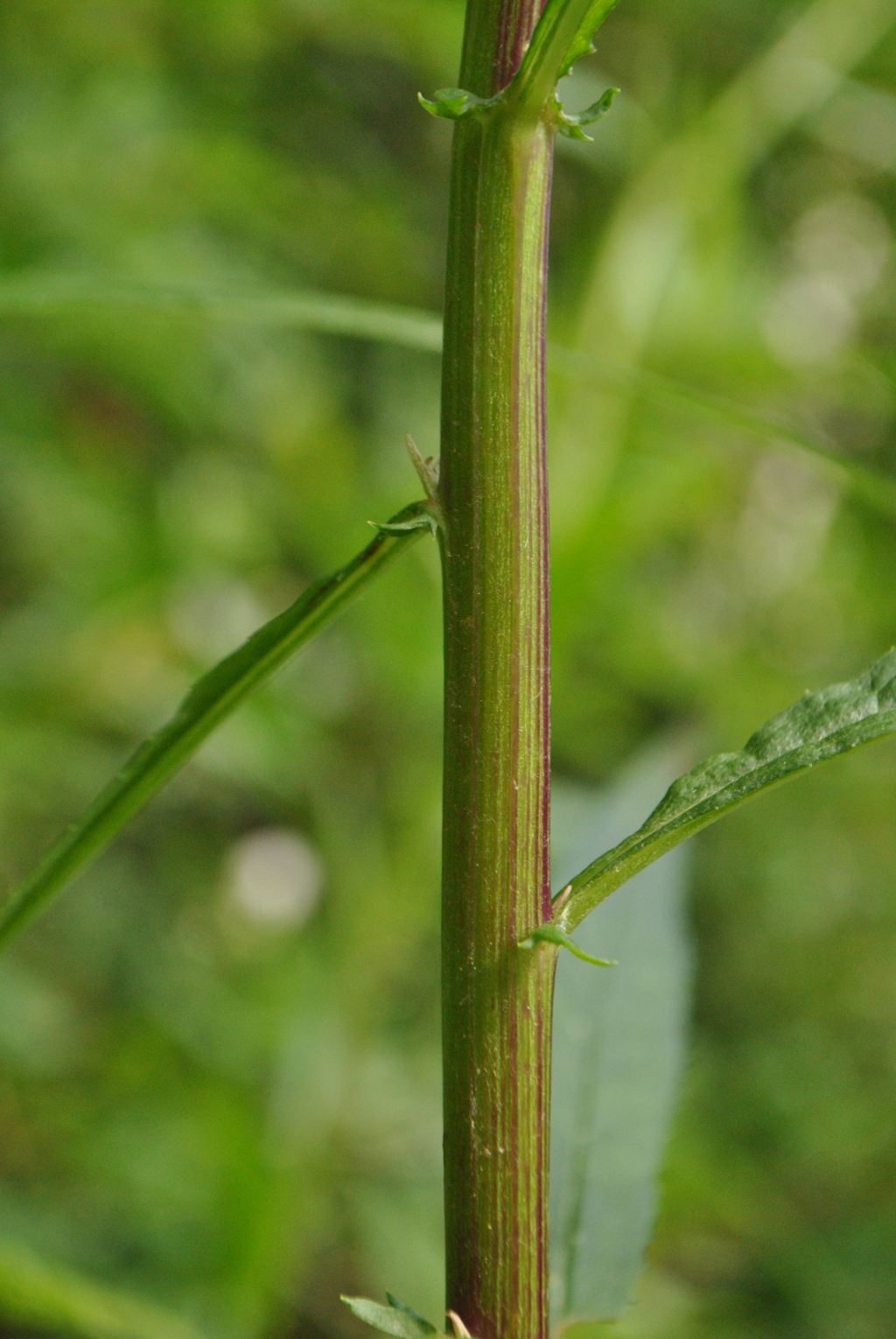Senecio linearifolius
A.Rich. Fireweed GroundselSlender to shrubby aromatic perennial to c. 1.5 m high; stems glabrous to white-cobwebbed. Leaves very variable, linear to ovate, 5–20 cm long, 3–50 mm wide, mostly sessile, sometimes shortly pseudopetiolate, often shortly auriculate, entire to regularly toothed; upper surface glabrous; lower surface glabrous, lightly cobwebbed or densely white-cobwebbed. Inflorescence corymbose, c. 4–15 cm across; capitula 20–200 or more, radiate; involucre cylindric, 3.5–5 mm long, glabrous or very sparsely cobwebbed at base; bracts 9–12; bracteoles few. Ray florets 4–8, yellow, ligules 3.5–6 mm long; disc florets 8–14, yellow. Cypselas obloid, 1.5–2 mm long, pale to reddish-brown, shortly papillose-hairy in rows; pappus of slender white hairs 4–5 mm long, deciduous. Flowers mostly Nov.–Mar.
GleP, VVP, VRiv, GipP, OtP, WaP, Gold, CVU, GGr, DunT, NIS, EGL, EGU, WPro, HSF, HNF, OtR, Strz, MonT, HFE, VAlp. Common in cool, high-rainfall districts, often associated with tall forests, and a common colonizer following fire and/or soil disturbance.
Several noteworthy variants, possibly deserving formal recognition, occur in Victoria. Typical S. linearifolius has glabrous, linear to narrow elliptic leaves, to c. 15 mm wide, with entire or subentire margins; it occurs mainly in lowland areas. A montane to alpine variant occurs above c. 1000 m, having glabrous, relatively broad-ovate leaves (to 50 mm wide) that are coarsely toothed and are more or less stem-clasping at the base. However, plants apparently intermediate with this and the typical variant occur throughout the range of the species. A distinctive variant having entire to dentate, linear to lanceolate leaves 2–15 mm wide, that are densely white-cobwebbed beneath occurs in the Grampians, Portland area, Brisbane Ranges and near Euroa.
Walsh, N.G. (1999). Senecio. In: Walsh, N.G.; Entwisle, T.J., Flora of Victoria Vol. 4, Cornaceae to Asteraceae, pp. 941–965. Inkata Press, Melbourne.
 Spinning
Spinning



